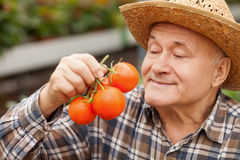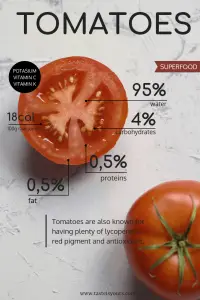As we probably know, arthritis features the inflammation of the joints and the surrounding connective tissues. There are various types of arthritis, depending on the aetiology. The most common types are rheumatoid arthritis and osteoarthritis.

Rheumatoid arthritis is an autoimmune condition in which the joints are inflamed, and osteoarthritis occurs due to old age and degeneration of the joints. The diet is an important factor to prevent and control the symptoms of this disease.
For instance, foods such as red meat can cause accumulation of uric acid in the joints and worsen arthritis symptoms. Contrary to this, fish oils have essential fatty acids, and they have anti-inflammatory properties that modulate and improve the symptoms of arthritis.
Foods you need to avoid if you have arthritis
There are no forbidden foods. However, if you want to control the symptoms of arthritis, you may want to avoid the following:
- Processed Sugar: Usually represented by soda beverages and soft drinks, but even juice drinks, flavoured coffees and sweet tea are not good if they have processed sugar. They promote the release of inflammatory cytokines that speed up the disease process in the articulation and worsen arthritis.
- Foods high in saturated fats: They typically include meat when it does not come from lean cuts, fast food, pizza and others. They cause obesity and speed up arthritis. Additionally, and even in lean people, saturated fats are inflammatory and may worsen arthritis symptoms.
- Processed carbohydrates: For example, white bread, potato chips and white rice. They are not forbidden, but an excess carbs in the diet release glycol oxidants in the blood and stimulate further inflammation and this can cause arthritis.
- Find out more about foods that can potentially make your Arthritis worse
Why are Tomatoes bad? Should they be avoided?
Some people include tomatoes in the list of non-recommended foods for people with arthritis.
This root vegetable is commonly used in everyday life, so tomatoes have various health benefits. That’s why people often ask if this belief is true or not. Like everything else, tomato can cause adverse effects when consumed in excess. However, let us review some features of tomato we should not miss:
Tomato has a great deal of potassium and magnesium; it is rich in vitamin C, vitamin B6, lycopene and Fibers. The reality is that fresh tomato can be a part of a rich diet, but processed tomato is stripped off some health properties.

Thus, tomato intake in fast foods (ketchup, fried foods and snacks) can cause heartburn, diarrhea, kidney stones, hypertension, and considerable symptoms in patients with arthritis. But this, in particular, is not because of tomato. It is the form of tomato or the preparation method that is causing this effect.
Nevertheless, can fresh tomato worsen arthritis as well?
What people say is in part correct. Eating tomato in excess can cause increased levels of uric acid in the body. This is associated with gout, a type of arthritis, and may worsen the symptoms of other types of arthritis. Additionally, tomatoes contain a chemical called solanine, which has various effects on the body. Some people believe that this substance is responsible for aggravating the pain and inflammation in arthritis, but there is no consistent evidence for or against the notion.
Is it true or just a myth?
As with many things in life the theory is not always consistent with practice, this is especially true in medicine. You can have foods with one or more unhealthy substances, and they are not necessarily bad. Remember that there are thousands of elements in fresh foods, and we only know some of them. We may see how the body reacts to a single substance, but there’s no way to predict what happens when thousands of other elements interfere.
Thus, to affirm or deny claims about food, we need scientific proof, and there is simply not enough to forbid tomatoes for patients with arthritis. Based on the lack of evidence, many doctors prefer to recommend tomato consumption instead of discouraging their consumption. Remember that tomatoes have various antioxidants that modulate inflammation throughout the body. These antioxidant prevent DNA damage and may contribute a great deal to the patient’s health.
Keep in mind that tomatoes do contain glycoalkaloids, and excess consumption can cause problems such as inflammatory bowel disease and symptoms like drowsiness, diarrhea, nausea and vomiting. Tomatoes do contain various proteins that cause allergy to some people. In allergy processes, histamine is released in large quantities and may cause pain in the joints. When the level of solanine is significantly increased in the body, it has toxic effects including GI tract symptoms such as stomach burning and abdominal discomfort, bloating, and diarrhea.
Thus, it is not tomato consumption that is linked to worsening of the symptoms in arthritis. It is an excessive intake that usually causes complications. The benefits are far more common than the potential toxicity associated with it.
What we really need to avoid when we have arthritis
Instead of pointing at tomato consumption, there is much we can do to improve the symptoms of arthritis. One of the most important things to avoid in arthritis is the habit of smoking. It is also useful to learn to control stress and pay attention to decreased levels of calcium or vitamin D in the body. Many fruits and vegetables produce antioxidants, such as citrus fruits and green vegetables, and help to reduce the symptoms of arthritis.
It is true that excess and deficiency are both bad for you. You will be fine if you eat tomatoes sparingly and don’t overdo it with a particular food group. Be careful enough to eat tomato in a balanced way and pay attention to your symptoms in case you’re one of those who suffer from allergies to this healthy root vegetable.
References:
Grant, W. B. (2000). The role of meat in the expression of rheumatoid arthritis. British Journal of Nutrition, 84(5), 589-595.
Haugen, M., Fraser, D., & Førre, Ø. (1999). Diet therapy for the patient with rheumatoid arthritis?. Rheumatology, 38(11), 1039-1044.
Childers, N. F., & Margoles, M. S. (1993). An apparent relation of nightshades (Solanaceae) to arthritis. Journal of Neurological and Orthopaedic Medicine and Surgery, 14, 227-227.
ZWERINA, J., REDLICH, K., SCHETT, G., & SMOLEN, J. S. (2005). Pathogenesis of rheumatoid arthritis: targeting cytokines. Annals of the New York Academy of Sciences, 1051(1), 716-729.
